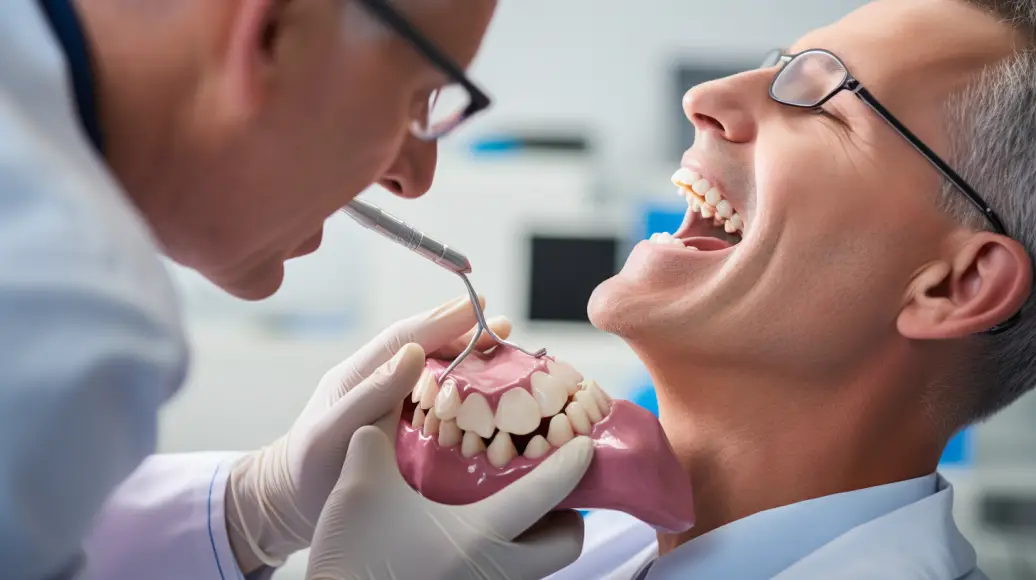Caries risk assessment is a modern dental practice as it allows for the identification and management of individuals who are at increased risk for dental caries.
Dental caries, commonly known as tooth decay or cavities, remains one of the most prevalent chronic diseases worldwide, affecting people of all ages.
The concept of caries risk assessment involves evaluating various factors that contribute to an individual’s susceptibility to developing dental caries. This assessment aids in tailoring preventive strategies and treatment plans to address each patient’s specific needs.
This article aims to comprehensively understand the definition and significance of caries risk assessment in dental practice.
It will explore the factors considered during this process and highlight the benefits of early detection in preventing further oral health complications.
Additionally, various methods used in caries risk assessment will be discussed, providing insights into their strengths and limitations.
Furthermore, recommendations for implementing this essential tool into daily dental practice will be provided to ensure optimal patient care.
Dental professionals can effectively manage the oral health needs of their patients and promote long-term oral well-being by having a thorough understanding of caries risk assessment.

Factors Considered in Caries Risk Assessment
Factors considered in caries risk assessment include the presence of dental plaque, frequency of sugar consumption, oral hygiene practices, saliva flow rate, fluoride exposure, and previous history of dental caries.
These factors are crucial for predicting an individual’s susceptibility to developing dental caries or tooth decay.
Dental plaque, a biofilm on teeth surfaces, contains bacteria that produce acids when exposed to sugars from food and drinks. Frequent consumption of sugary substances increases the chances of acid production and subsequent damage to tooth enamel.
Oral hygiene practices such as regular brushing and flossing help remove plaque and reduce the risk of caries development.
Saliva is important in maintaining oral health as it helps neutralize acid attacks and remineralize damaged tooth structures.
Fluoride exposure through fluoridated water or fluoride-containing dental products strengthens enamel and protects against decay.
Previous history of dental caries serves as an indicator for future risk assessment and aids in determining appropriate prevention strategies.
Healthcare professionals can develop personalized preventive approaches to reduce the risk of caries in individuals by taking these risk factors into consideration.
Importance of Caries Risk Assessment in Dental Practice
Caries risk assessment plays a vital role in dental practice by enabling dentists to tailor preventive strategies for patients.
Dentists can create personalized preventive measures for individuals with a higher risk of caries by identifying their specific needs.
Additionally, caries risk assessment allows dentists to customize treatment plans by determining the most appropriate interventions based on the individual’s level of risk.
This approach ensures that patients receive optimal care and helps minimize dental caries’ occurrence and progression.
Tailoring preventive strategies
Tailoring preventive strategies involves customizing interventions based on individual risk profiles and specific oral health needs. This individualized approach aims to provide personalized care to patients, optimizing their oral health outcomes.
Dental professionals can conduct caries risk assessments to identify individuals who are at a higher risk of developing caries. This helps in tailoring preventive strategies accordingly.
One way to visualize this concept is through the use of a table:
| Risk CategoryConduct a further assessment to determine appropriate preventive strategies | |
|---|---|
| Low | Regular dental check-ups, fluoride treatments, dental sealants |
| Moderate | Frequent dental check-ups, regular fluoride treatments, dietary modifications |
| High | Intensive dental care, frequent fluoride treatments, dietary modifications |
| Very High | Aggressive treatment plan including frequent dental visits and extensive preventive measures |
| Unknown | Conduct further assessment to determine appropriate preventive strategies |
Categorizing patients into different risk categories and providing targeted interventions based on their individual needs, tailored preventive strategies can effectively reduce the occurrence and progression of caries.
This approach ensures that each patient receives the most suitable preventive care for their oral health condition.
Customizing treatment plans
Customizing treatment plans involves individualizing interventions based on patient-specific needs and oral health conditions, ensuring optimal outcomes for each individual.
This patient-centred approach recognizes that every patient is unique and requires personalized interventions to address their dental needs.
A customized treatment plan may include a combination of preventive measures such as:
- Fluoride application.
- Dental sealants.
- Regular professional cleanings.
Additionally, it may involve targeted interventions like:
- Dietary counselling to reduce sugar consumption.
- Use of antimicrobial agents to control bacterial growth.
Using a tailored treatment plan to the patient’s risk factors and preferences, oral healthcare providers can optimize preventive strategies and improve oral health outcomes.
This personalized approach empowers patients to take an active role in their oral health care while ensuring that their treatment plan aligns with their needs and goals.
Benefits of Early Detection of Caries Risk
Early detection of caries risk provides numerous benefits, including the ability to initiate preventive measures and interventions promptly.
Identifying individuals at an early stage at a higher risk for developing caries, healthcare professionals can implement targeted strategies to mitigate the progression of this disease.
Early detection allows for implementing preventive measures such as fluoride treatments, dental sealants, and dietary modifications that can help reduce the incidence and severity of caries.
Moreover, it enables timely intervention through restorative treatments or non-surgical approaches like remineralization techniques.
Through these proactive measures, early detection of caries risk can potentially improve oral health outcomes by reducing tooth decay rates and associated complications.
Additionally, by addressing caries risk early on, there is a potential reduction in financial burden on individuals and healthcare systems by preventing costly dental procedures that may be required if caries progress to advanced stages.
In general, detecting oral health issues early is important for maintaining good health and reducing the negative effects of tooth decay on a person’s well-being.

Methods Used in Caries Risk Assessment
Early detection of caries risk brings significant benefits in terms of timely intervention and prevention of dental caries.
Various methods are used in caries risk assessment to effectively assess the risk. These methods aim to identify individuals at a higher risk of developing caries and provide tailored preventive strategies accordingly.
- Clinical examination: Dentists perform a thorough examination, assessing factors like previous caries experience, plaque accumulation, oral hygiene habits, and tooth decay or cavities.
- Caries Risk Assessment Tools: Various validated tools incorporate multiple risk factors to determine an individual’s overall caries risk score. These tools consider age, diet, fluoride exposure, saliva flow rate and composition, socioeconomic status, and genetic predisposition.
- Imaging techniques: X-rays and other imaging techniques enable dentists to detect early signs of tooth decay that may not be visible during clinical examination alone.
Using these comprehensive methods in caries risk assessment, dental professionals can accurately evaluate an individual’s susceptibility to dental caries and develop personalized preventive interventions for optimal oral health outcomes.
Implementing Caries Risk Assessment in Dental Practice
One crucial aspect of incorporating caries risk assessment into dental practice is integrating validated tools that consider multiple factors to determine an individual’s susceptibility to tooth decay.
Using Integrated technology, dental practices can assess and monitor patients’ caries risk efficiently.
Computerized systems, such as electronic health records or specific software programs, allow for the collection and analysis of data related to a patient’s oral health history, diet habits, saliva composition, and bacterial load.
These tools comprehensively evaluate the patient’s caries risk profile and aid in developing personalized prevention strategies.
Furthermore, implementing caries risk assessment in dental practice involves patient education.
Dentists can utilize interactive educational materials or mobile applications to educate patients about their individual risks and empower them with knowledge on preventive measures like proper oral hygiene practices, dietary modifications, and regular dental visits for professional interventions.
Frequently Asked Questions
What are the different types of caries risk factors considered in caries risk assessment?
The different types of caries risk factors considered in caries risk assessment include demographic factors (such as age and gender), behavioural factors (such as oral hygiene practices and dietary habits), and clinical factors (such as the presence of dental plaque or previous history of dental caries).
How often should caries risk assessment be performed in dental practice?
Caries risk assessment should be performed regularly in dental practice to determine the frequency and timing of assessments.
This ensures that patients’ caries risk status is accurately evaluated and appropriate preventive measures can be implemented in a timely manner.
Can caries risk assessment help prevent or reduce the need for dental treatments?
Caries risk assessment can help prevent or reduce the need for dental treatments by identifying individuals at higher risk and implementing appropriate prevention strategies.
The effectiveness assessment of these strategies is crucial to optimize outcomes.
Are there specific age groups or populations that can benefit the most from caries risk assessment?
Caries risk assessment can benefit specific age groups and populations by identifying individuals at a higher risk for dental caries.
This allows for targeted preventive measures to be implemented, reducing the need for dental treatments in these groups.
What are some challenges or limitations in implementing caries risk assessment in dental practice?
Some challenges and limitations in implementing caries risk assessment in dental practice include the lack of standardized protocols, limited awareness and training among dental practitioners
Difficulties in obtaining patient cooperation, and potential financial constraints for implementing the necessary tools and technologies.

Conclusion
In conclusion, caries risk assessment is absolutely crucial in dentistry as it enables the identification of individuals who are at a higher risk of developing dental caries.
By considering various factors such as oral hygiene habits, diet, and dental history, dentists can effectively determine each patient’s risk level and develop personalized preventive strategies.
Early detection of caries risk allows for timely intervention and treatment, ultimately improving oral health outcomes.
Implementing caries risk assessment in dental practice ensures comprehensive care and promotes long-term oral health.

Chris Ekai is a Risk Management expert with over 10 years of experience in the field. He has a Master’s(MSc) degree in Risk Management from University of Portsmouth and is a CPA and Finance professional. He currently works as a Content Manager at Risk Publishing, writing about Enterprise Risk Management, Business Continuity Management and Project Management.

